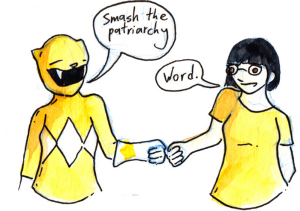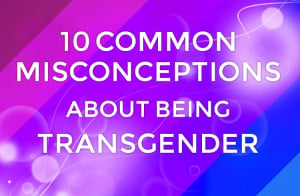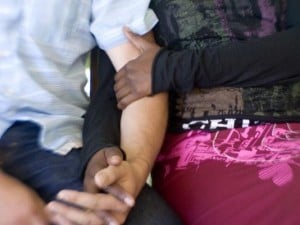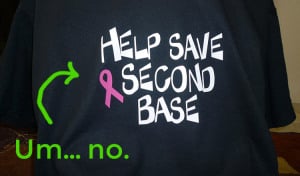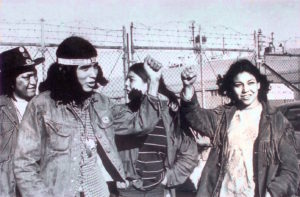
Native activists at the 1969 Occupation of Alcatraz Island raise their fists. Image credit: “The Mouse That Roared.”
Originally published on The Body Is Not an Apology and cross-posted here with their permission.
The history of people indigenous to the North American continent is often glossed over in education.
We’re badgered with the legend of Native benevolence to the pilgrims who landed on the east coast on Thanksgiving.
If Indigenous history is covered, students are likely to hear a tragic, but vague narrative of massacre, disease, and death – a narrative devoid of the specific political and tribal context that’s vital to understanding the colonial and imperial relationship between Native communities and the US.
This renders Indigenous bodies invisible. This also contributes to the concealment of contemporary Indigenous rights movements, some of which are happening right now.
It is essential that we acknowledge the physical, economical, and psychological trauma that US colonialism has inflicted on Indigenous communities.
It is also essential that we acknowledge historic and momentous moments of resistance led by Indigenous people. For further reading after this article, please check out Roxanne Dunbar-Ortiz’s book, An Indigenous People’s History of the United States, which was a vital resource in the creation of this article.
Here are seven moments in Indigenous history that we should have been taught in school.
1. Divide and Conquer: The Dawes Act of 1887
An extremely complicated facet of history, The Dawes Act (otherwise known as the “General Allotment Act” or the “Indian Homestead Act”) intended and succeeded in dividing reservations already established by previously set treaties, though this effort was met with resistance.
Through the Dawes Act, tribally owned land decreased from 138 million acres in 1887 to 48 million acres in 1934. This amount of land lost is comparable to the size of the state of Minnesota.
The Dawes Act gave the President of the United States “the right to dissolve any reservation created for Indian use…if it is his opinion that it would be advantageous for agricultural and grazing purposes.”
Native families were allocated small plots of land, under the stipulation that they pay a land tax. Any Indigenous people allocated land who relinquished tribal life were “gifted” with United States citizenship. “Surplus” land left after allocation were sold by the United States to settlers.
The Act played a large role in westward expansion, Manifest Destiny, and in Indigenous assimilation efforts. It is an essential component to US history that absolutely must be taught in schools.
2. The Massacre at Wounded Knee and the AIM Occupation
The massacre at Wounded Knee, which resulted in the bloody murders of 250 to 300 Lakota men, women, elders, and children, was a part of a pattern in United States war tactics to quash anti-colonialist movements and people.
Roxanne Dunbar-Ortiz says that this pattern would continue “from the Philippines and Cuba to Central America, Korea, Vietnam, Iraq, and Afghanistan. The cumulative effect goes beyond simply the habitual use of military means and becomes the very basis for US American identity.”
How can students fully comprehend a history of the United States without first studying this event, which is exemplary of the horrific war tactics employed by the US to eradicate this land’s first people?
Troops were deployed to Wounded Knee in order to arrest Chief Spotted Elk and scatter his followers. Chief Spotted Elk had led a group of Lakota people to Wounded Knee to dance the Ghost Dance, a traditional dance that a Paiute Elder had prophesied would bring about the end of Euro-American imperialism.
We cannot teach that the US was founded under the principle of freedom of when such violent acts are perpetrated against people practicing their religion.
It is also important to teach that just fourteen days earlier, a warrant for Lakota leader Chief Sitting Bull was issued at Standing Rock Reservation, where he would be eventually killed by police.
Important to teach alongside the massacre, however, is the 1973 siege and occupation of Wounded Knee. It’s irresponsible to teach moments of tragedy without also teaching the resistance movements which oppose colonial violence.
The occupation lasted 71 days and strove to challenge the substandard living conditions created on reservations by the US government. The choice of placement here was critical: To advocate for social change on the land which had born witness to tragedy is power.
This movement was part of a larger string of protests and occupations known as the Trail of Broken Treaties, which included a twenty-point position paper to address the injustices against Indigenous people on behalf of the US government
3. Boarding Schools and Extreme Assimilation Efforts
Indian boarding schools were created in order to assimilate Native people by forcibly removing them from their communities, culture, and family.
Dunbar-Ortiz says that these schools were modeled after the Fort Marion Prison, where Captain Richard Henry Pratt left “captives [shackled] for a period in a dungeon, had their clothes taken away, had their hair cut, dressed them in army uniforms, and drilled them like soldiers.”
This is the same man, by the way, who is famously quoted as saying, “Kill the Indian and save the man.”
The Carlisle Indian Industrial School was the first to be implemented under this motto. At schools like these, Indigenousness was posed as antithetical to civilization, as though Native people had not created their own civilizations, cities, and communities thousands of years before imperial contact.
More than 100,000 Natives were placed into boarding schools, and the end results included, mostly, irreparable psychological and emotional damage.
By forcing cultural imperialism and genocide upon children, the US government made its priorities clear – if Native people couldn’t be massacred out of existence, then the next facets of life to attack was culture, language, and the soul itself.
But Indigenous culture is beautiful, brilliant, resilient, and proud. Teaching the traumatic legacy of boarding schools is imperative to taking responsibility for the great harm colonialism has caused.
Other ways to ensure that Indigenous culture doesn’t disappear is by investing in the success of traditional Native language and buying from inspired natives rather than from culturally appropriative native-inspired fashions.
4. The Indian Relocation Act of 1956
This was a Bureau of Indian Affairs (BIA)-funded project which focused on relocating Indigenous people to major urban industrial areas – most prominently to the San Francisco Bay Area, Los Angeles, Phoenix, Dallas, Minneapolis, Denver, and Cleveland.
Indigenous people were drawn away from tribal communities and funneled into urban areas with the promise of BIA benefits, housing, and job training programs.
It’s important to note that at this time, the US government had already terminated over 100 Indigenous nations, making Relocation another act of assimilation, another act of trying to make Native people disappear.
By further distancing Natives from tribal life and identity, the easier it would be to attack and destroy treaties and legislation upholding tribal sovereignty.
The struggles of relocated Natives into large cities are diverse and include poverty, violence, alcoholism, and a loss of tribal identity.
What the US didn’t expect was for marginalized communities to inspire one another. As Native populations were scattered into poor communities and into existing communities of color, the proximity of relocated Natives into these communities in the thick of the Civil Rights Movement lead to the formation of Indigenous advocacy groups, such as the Minneapolis-based American Indian Movement.
For more information about the Indian Relocation Act, watch the film “Exiled NDNZ” by Navajo film-maker Pamela J. Peters.
5. The 1969 Occupation of Alcatraz Island
From November 20, 1969 to June 11, 1971, a group of inter-tribal activists under the name of Indians of All Tribes occupied the island after Alcatraz Federal Prison shut down operations on the island, citing the 1886 Treaty of Fort Laramie which guaranteed the return of out-of-use federal lands to Native peoples.
After a period of removals, the occupation gained traction, and 79 Native activists held the space down, despite a Coast Guard brigade.
The Alcatraz Proclamation, a sharp and bitingly pointed document, issued a direct statement of intent to the US government that since the infrastructure of government-created reservations became increasingly unstable and unlivable, it was only the natural course of things for Indigenous people to “discover” new lands to populate.
Unfortunately, white hippies from San Francisco became attracted to the occupation and brought along with them drugs and alcohol, an action of total disrespect to Indigenous peoples and intentional actions.
A decree had to be issued that all of those who were not Indigenous were to leave the island at night. However, this is a good moment in history to look to and draw example from when explaining to white activists why they must treat tribal land with respect at Standing Rock.
Watch the documentary We Hold the Rock for more information on this moment of Indigenous resistance.
6. The Walleye Wars
The Walleye Wars was a bitter, violent political confrontation between the Wisconsin state government, non-Native sport-fishermen, and tribal Lac Courte Orielles and Lac Du Flambeau fishermen who spearfished, a traditional Ojibwe fishing method.
Non-native sport-fisherman, who are not allowed to spearfish due to state gaming regulations, became increasingly violent and threw rocks, blockaded, and shouted vile racial slurs at the fishermen on the lake.
There was even a bomb threat at a local community hall where there was to be a feast for those advocating for Ojibwe treaty rights.
This was over an alleged (and non-factual) fear by the non-Native fisherman who thought that spearfishing would deplete the walleye and musky populations, though data at the time and data to come out subsequently would prove otherwise.
But the tribe held their ground and advocated for their treaty-given rights.
An injunction to the group “Stop Treaty Abuse” was issued to halt harassment of the traditional fishermen. Groups such as the Midwest Treaty Network formed to strengthen tribal communities through treaty education and direct action.
The Walleye Wars should be taught in history class because it is a contemporary example of Indigenous people standing up for – and retaining – their rights.
Watch this clip from Lighting the 7th Fire, a documentary that offers a more in-depth look at the issue.
7. The History of Nuclear Proliferation on Reservations
Three-quarters of the 15,000 uranium mines in the United States exist on Native reservations, most predominantly on Navajo land. This has caused pervasive health hazards, trauma, and death among Indigenous peoples.
Many of these plants have since been abandoned and have yet to be cleaned up, leaving heaps of exposed uranium scattered throughout Navajo Nation, spreading into the air and into the water supply.
The EPA only announced its plan for clean-up in September 2016.
This has affected the Navajo water supply to the point where it is nearly undrinkable. Indigenous women are on the forefront of ensuring that families receive the water they need to live.
The proliferation of uranium for nuclear weaponry on tribal land is a special kind of cruelty.
In doing this, the US government perpetuates violent colonialism and imperialism by extracting resources from the land it’s already colonized.
The history of uranium mining on Navajo land must be taught as a part of a continuing pattern of corporate interest extracting resources from Indigenous land at the expense of the health of Indigenous people and the health of the earth.
Read Winona LaDuke’s “The Militarization of Indian Country” to further your understanding of how US military interests harm Indigenous communities.
[do_widget id=’text-101′]
Halee Kirkwood is a gender-fluid, queer, and mixed individual of Anishinaabe descent with an acute interest in self-love as colonial resistance, as well as in reproductive freedom and queer/trans rights. They currently live in St. Paul, Minnesota, where they will soon be pursuing an MFA at Hamline University. Read their articles here and follow them on Twitter @alienspacebb.
Search our 3000+ articles!
Read our articles about:
Our online racial justice training
Used by hundreds of universities, non-profits, and businesses.
Click to learn more









